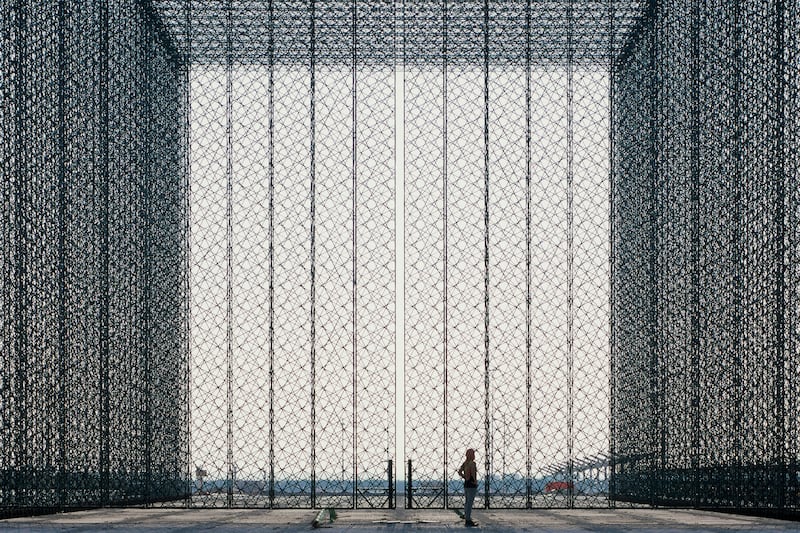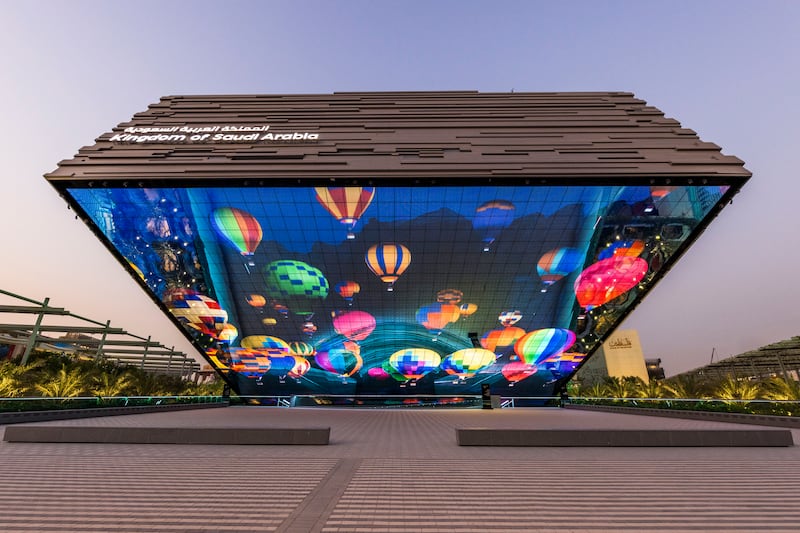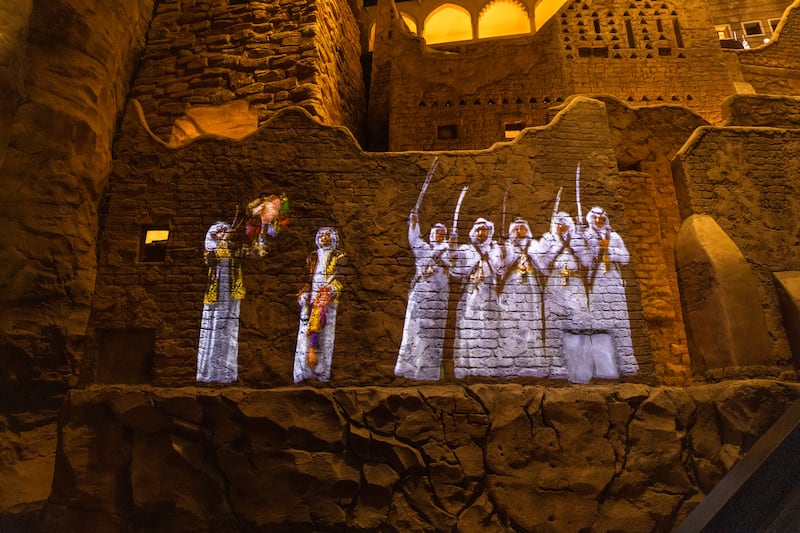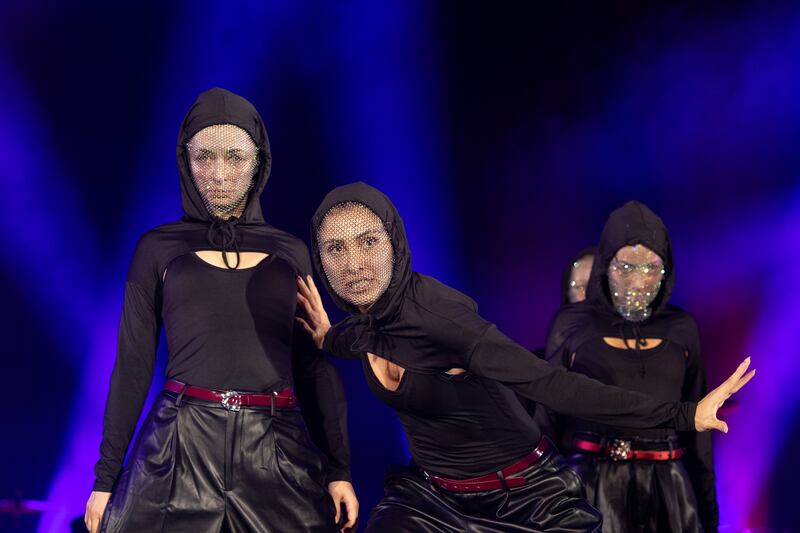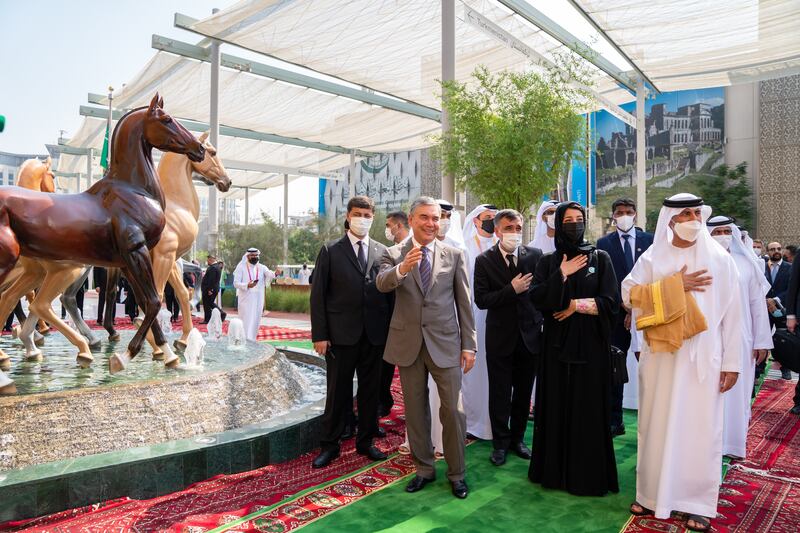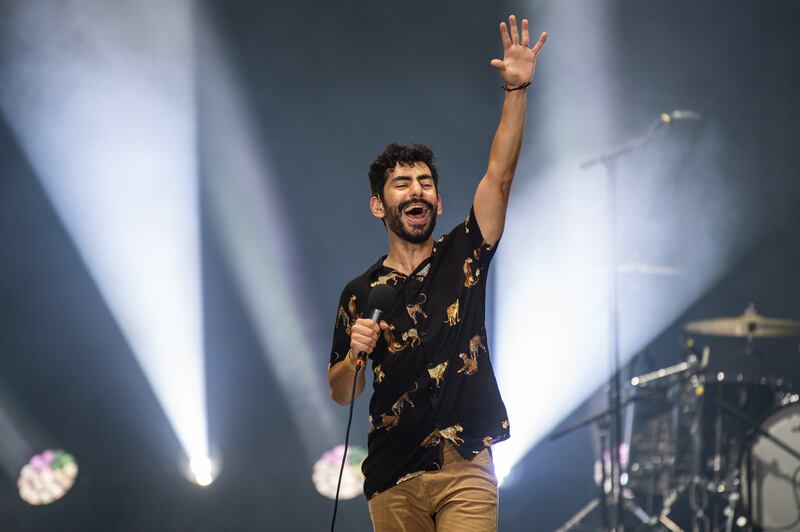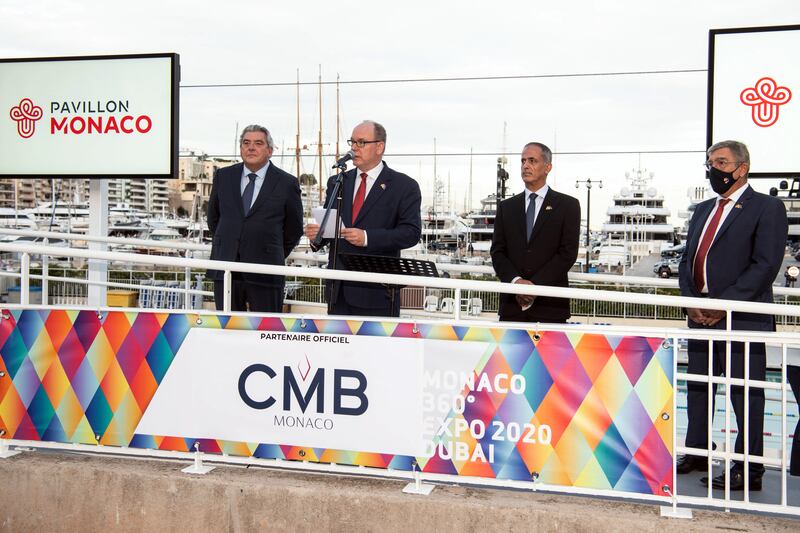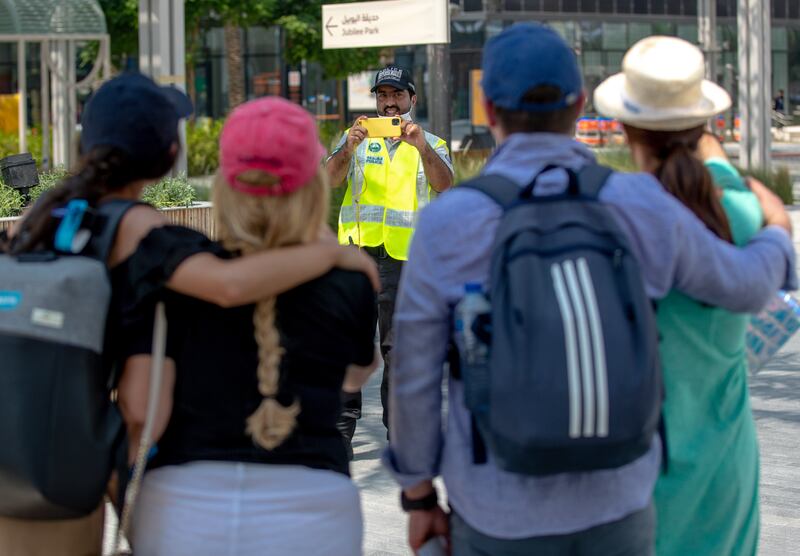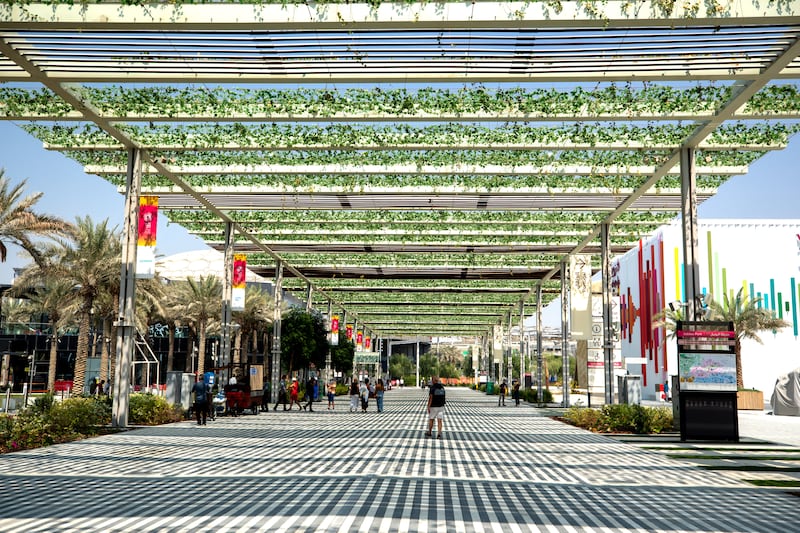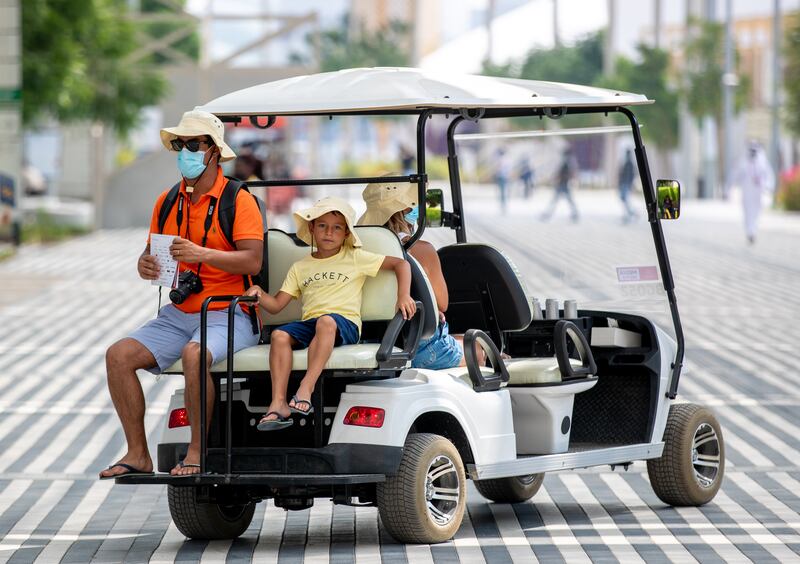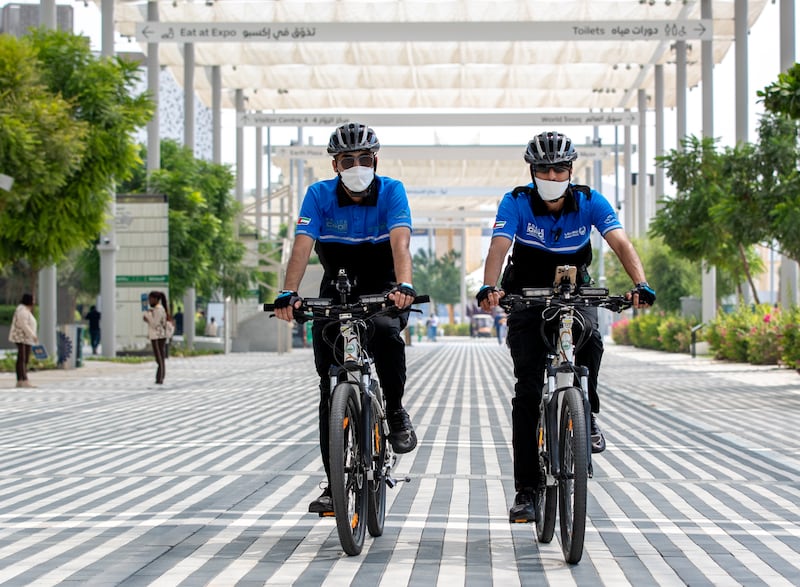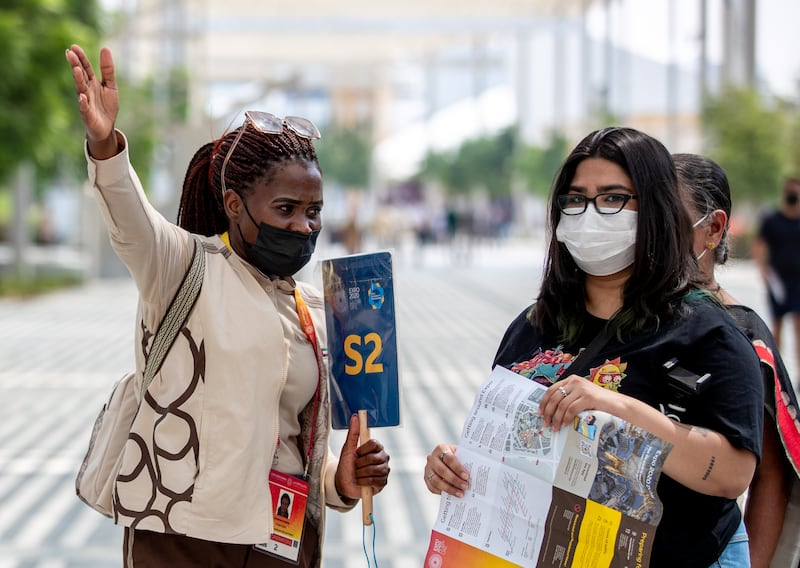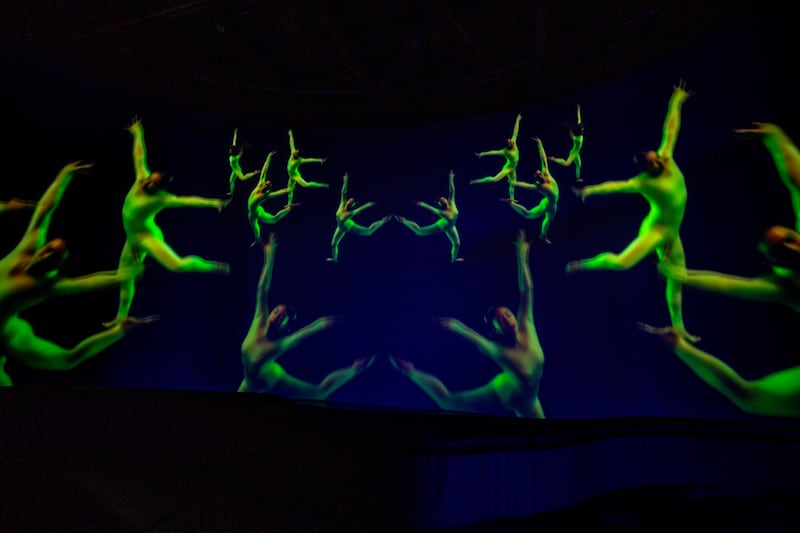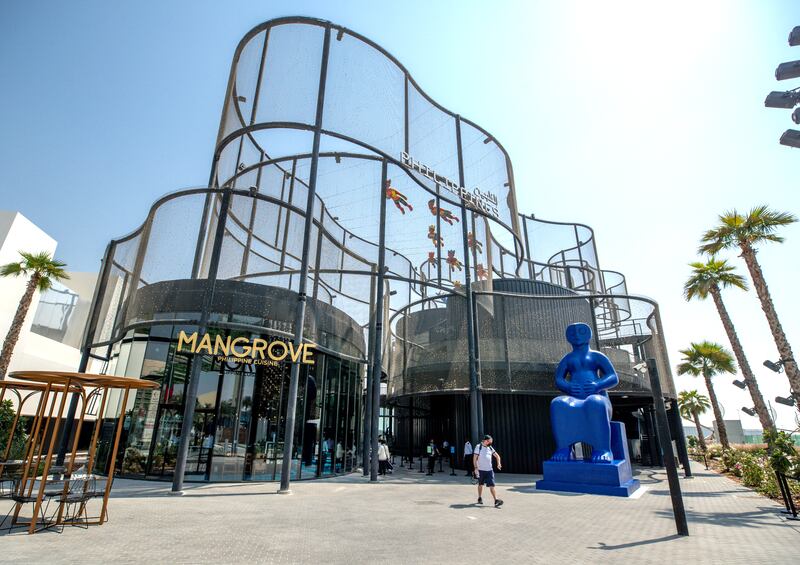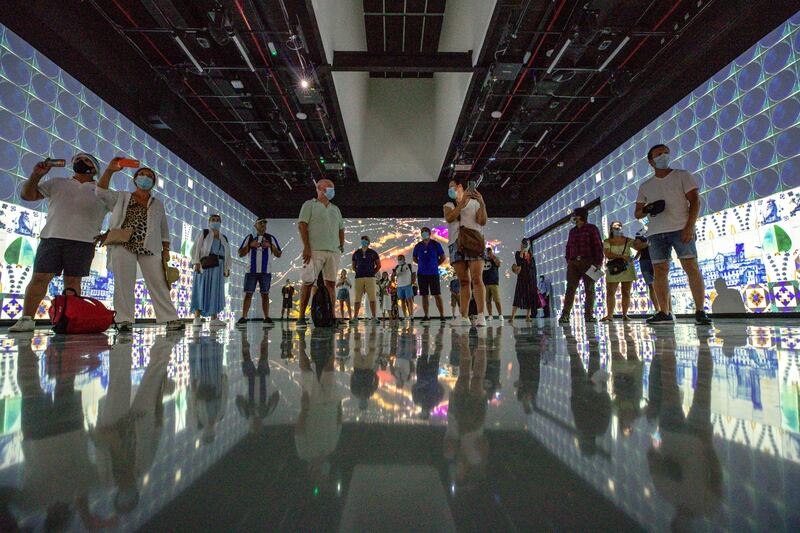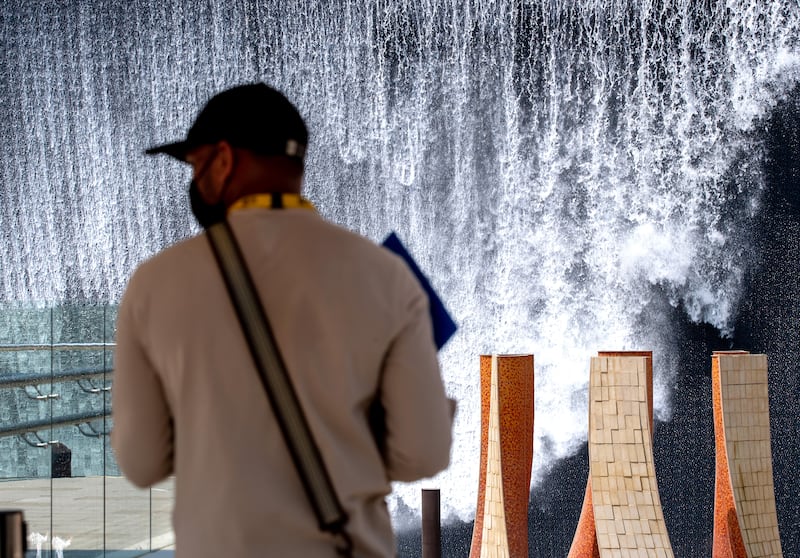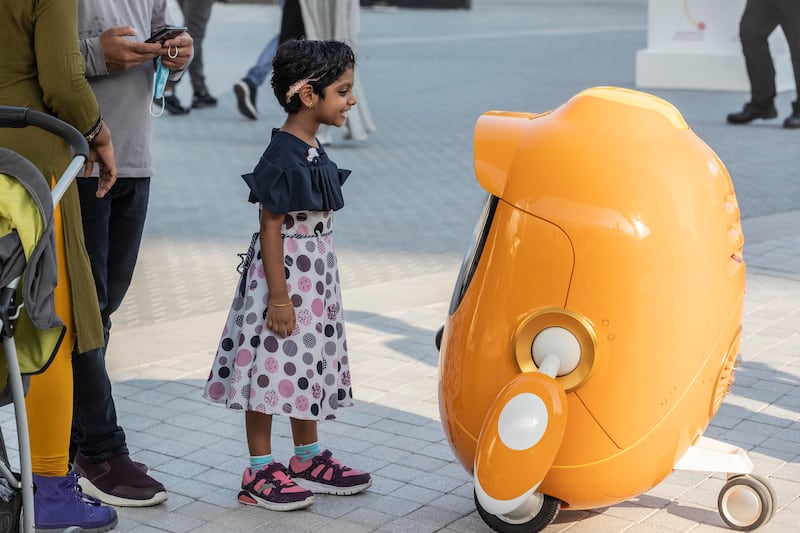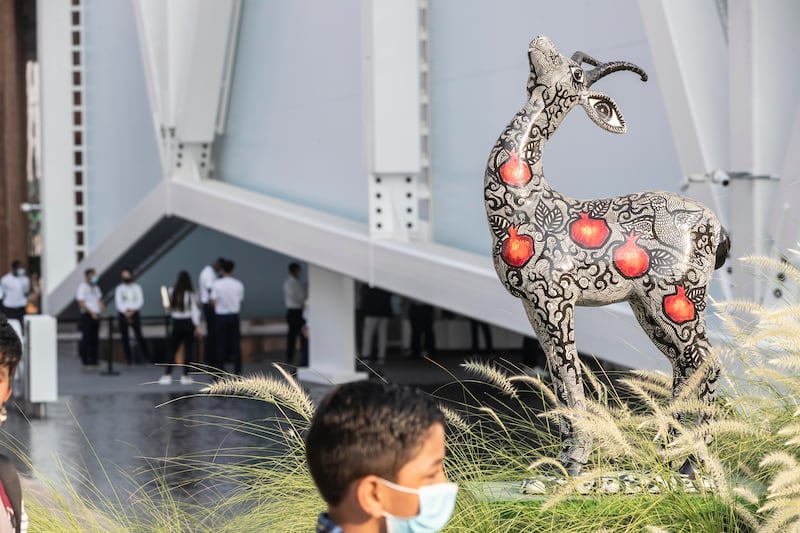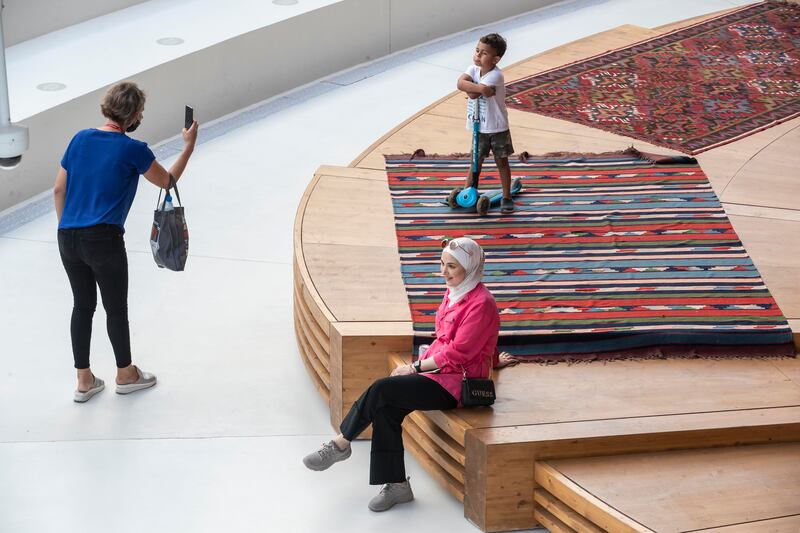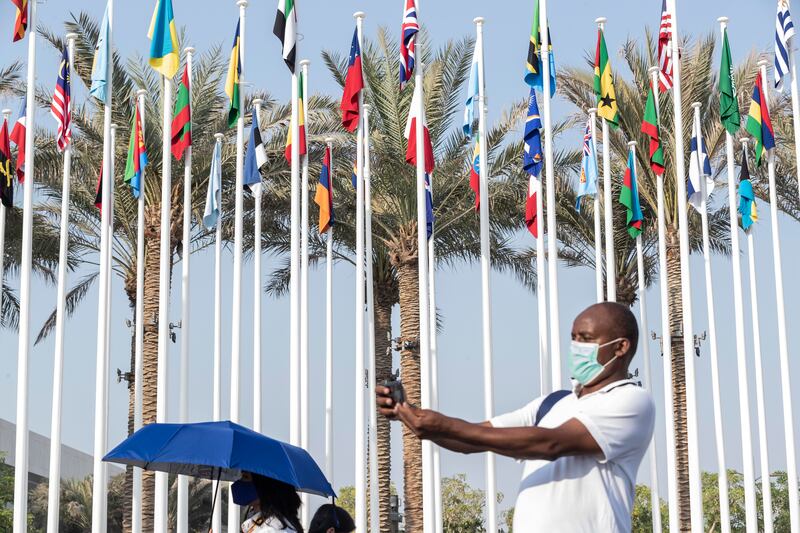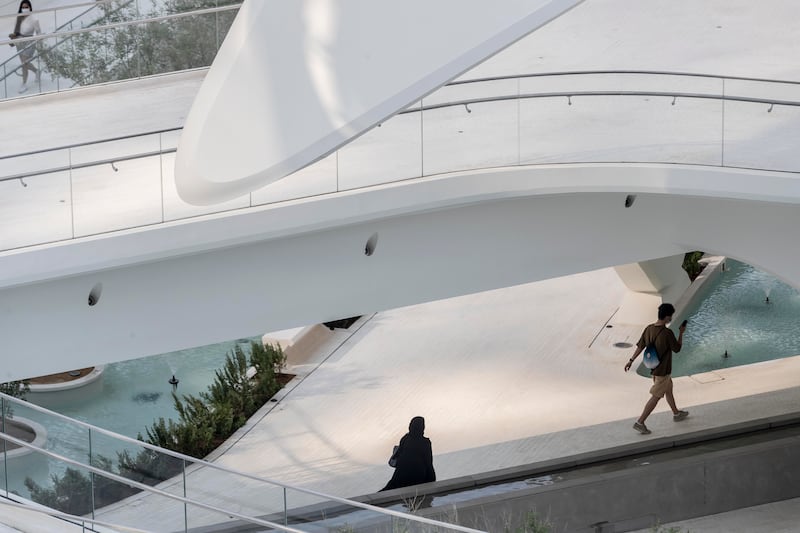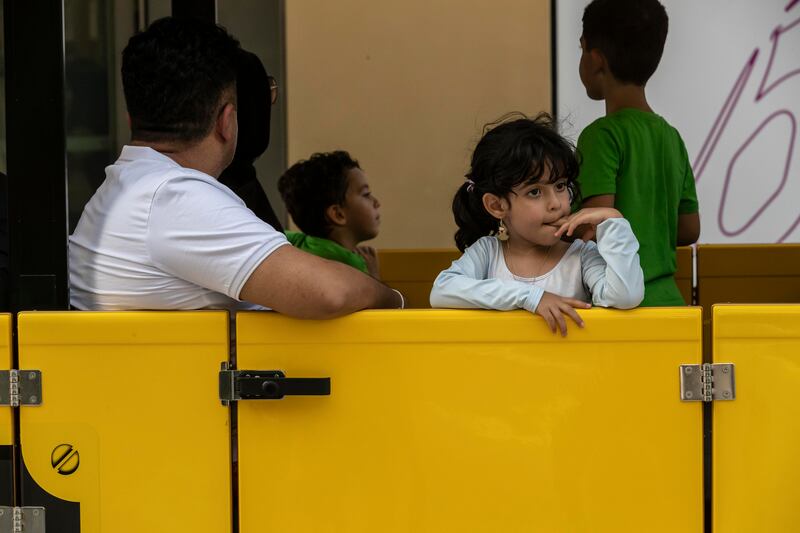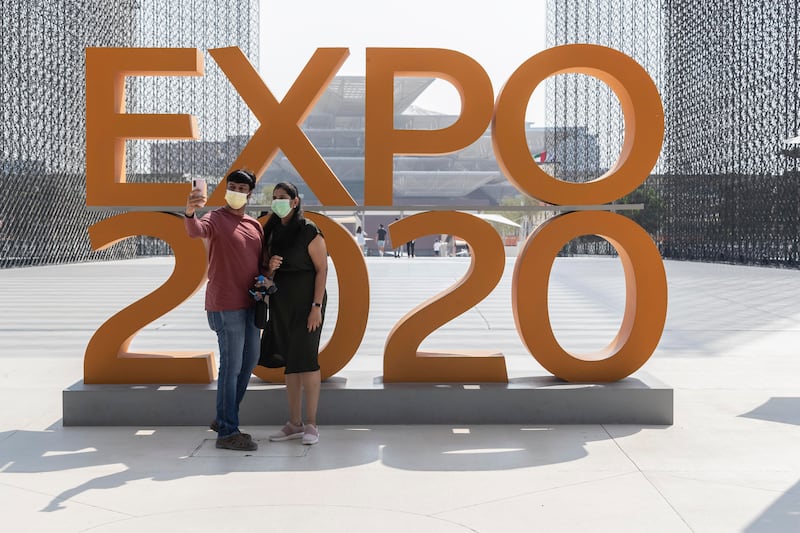To gain entrance to the recently opened Expo 2020 Dubai site, millions of people will stream through the giant gateways that have been designed by British architect Asif Khan.
Follow the latest updates on Expo 2020 Dubai here
“It is the first piece of architecture you see when you arrive at Expo, and it’s the last piece you see when you are leaving. So, when we recognised that, we realised it was important that it became something that would provide a profound experience,” Khan says via Zoom.
“Its job is to be seen from a distance, so you know where the entrance is, and to provide a moment of transformation, mentally and physically. You are walking through a doorway, moving from one space to another, and moving from one state of mind to another. And also moving from the past to the future.”
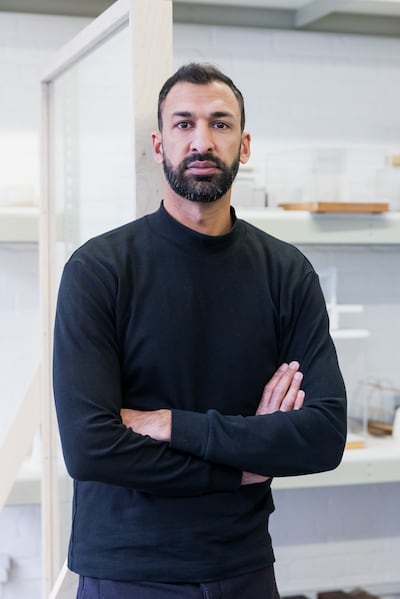
The result is three box-shaped gateways, made of ultra-lightweight carbon fibre to create an almost impossible sense of fragility. Extending 30 metres deep, with doors 21 metres high, each structure consists of a skeleton of lines – held together with complex geometry – that cross and intersect to create a hauntingly beautiful lattice that shifts and moves depending on the viewer’s perspective.
It is light enough for the doors to be opened by one person and yet strong enough to be entirely self supporting. That same geometry not only allows air to move freely through the network and provides shade and stability, but also echoes the traditional patterning of the mashrabiya.
“It’s the idea of exploring the mashrabiya and combining it with engineering: so what you see is not a symbolic pattern, though that is the outcome,” Khan explains. “What you are seeing is pure structural engineering. With the structure reduced to the absolute minimum that is required to provide structural stability and airflow, and maximise light and transparency, but at the same time, the largest amount of strength possible. And the geometry that unfolds at the end is this perfect mashrabiya pattern work, but it’s all functional. Every line there is holding the structure up.”
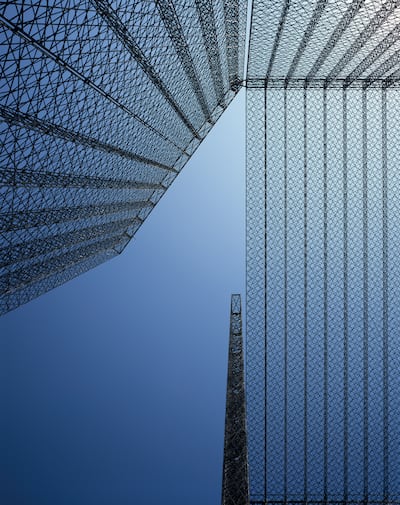
Khan’s first introduction to Expo 2020 was a 2015 bid to design the Mobility Pavilion. While ultimately unsuccessful, it sparked a fascination for “what Expo 2020 Dubai could really be about”. He was then asked to design the entrance portals and orchestrate the public realm – the spaces in between the 200 pavilions – to bring cohesion across the site. “The task we were given was to bring a sense of place to the master plan, and the work that we did encompassed everything from landscaping to paving patterns, the arrival sequence, the portals and the Observation Tower.”
As the first World Expo to be held in the Middle East, Khan, who is of Pakistani and East African descent, felt a responsibility to help tell the world of the achievements and contributions of the Islamic world, through cutting-edge engineering and state-of-the-art manufacturing processes that he says have “deep roots in the region”.
“It’s the first time the light has been shone on this region, so in a way, it is saying: ‘What do you have to tell the world?’ There is an enormous amount this region [has] taught the world, whether it’s philosophy, science, language or architectural elements.”
To highlight that, it was important to Khan to push the boundaries in a way that is a celebration of World Expos. Traditionally a place of excellence, the first Great Exhibition in London in 1851 was immortalised by Joseph Paxton and his Crystal Palace made entirely of glass and iron, while for the 1889 world’s fair in Paris, Gustave Eiffel built his skeletal metallic tower for the entryway that still stands to this day. For the 1970 Expo in Osaka, Japan, meanwhile, Kenzo Tange created structures that seemed to float.
World Expos have a noble tradition of raising the bar of what can be achieved in terms of architecture and structural engineering.
For the design of the portals, Khan knew it was important to look to the region for inspiration. “If you go back [in time] to the idea of the medina and any of the great walled cities of the region, they all had incredible portals to keep people out and to keep the right people in. The opening and unveiling of Expo had to be done in a powerful and grand way that people would never forget; that’s why the doors are so big. So the moment of opening is mind-blowing.
“We wanted to say to the world: ‘Look twice, look again; you don’t know everything about this place, there is a lot more to learn here.’”
Encouraged by Reem Al Hashimy, Minister of State for International Co-operation and director general of Expo 2020 Dubai, Khan and his team realised that the public realm project was a perfect opportunity to raise awareness of the region, so he collaborated with artists and craftspeople from across the Middle East. For example, some of the benches dotted throughout the site were made in collaboration with Lara Captan, a Lebanese digital typographer.
“We worked with her for two to three years developing a script language, an exploration of the history and nuances of Arabic script, [now] transformed into physical curving forms that people can sit on. They are very beautiful 3D things, but they are also a statement about the importance of the origins of culture and making it present today.”
The result is a series of more than 50 long, curving benches crafted from Arabic calligraphy. Other seating comes in the form of traditional Emirati wooden benches. “The kind you see in the old town,” Khan explains. ”We have rebuilt those and made them locally.”
The level of nuance and detail that Khan has injected into the public realm will take several visits to fully absorb. “Everything there has a story, and a reason for it being designed that way, and when people visit, they shouldn’t be afraid to ask.”
One example is the pathways, which have a pattern inspired by Sadu weaving. “We used different types of material that cross over each other,” Khan explains. Another is the colour of the columns holding up the shade canopies. To create it, Khan asked Emirati watercolourist Abdul Qader Al Rais to paint the UAE national tree, the ghaf. From Al Rais’s artwork, two colours were custom-mixed and then applied to the shade supports. “The columns are a beautiful green-grey that will be so familiar to everyone in the UAE.”
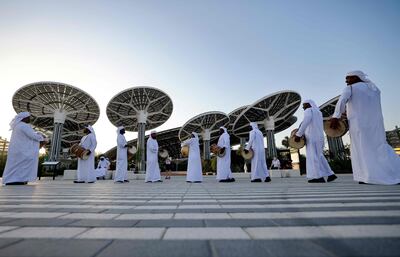
Every element was discussed, dissected and perfected. “To show you the level of micro detail, we had this idea called ‘second sunset’. The lights in the public realm will match the colour of the Dubai sunset and they will extend the colour by an extra hour, and, slowly through the evening, will change to another warm colour. So, none of this strong blue light; it’s about atmosphere and responding to natural and circadian rhythms. It’s a very subtle but very beautiful transition that will happen.”
One of the final Expo elements that Khan was tasked with fine-tuning was the Observation Tower. “It has trees on its deck that go up into the sky. It’s called the Garden in the Sky; it goes up and down and the trees go with it. It’s a remarkable engineering feat, and it will grow over time. There is so much to experience in the public realm that isn’t even the international pavilions, it’s just the glue holding everything together. There is so much to take in.”
With Expo 2020 Dubai’s overall theme being “Connecting Minds, Creating the Future”, every team involved strived to excel. But for Khan, guidance really came from Al Hashimy.
“She is a person who inspired me to go to another level and make sure every detail and every decision we made considered the story it was telling, that every aspect was a conscious decision and nothing was done out of pure expedience, or being forced. Everything was done by choice and as an opportunity to make the design speak about the region, the future and the past,” he explains. “She is an amazing collaborator, and she really raised the bar on what they were trying to achieve. An amazing, inspirational figure.”
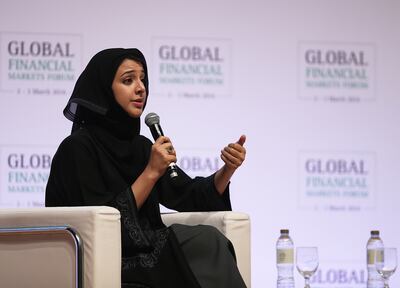
In addition to the five years spent working on Expo 2020 Dubai, Khan and his team have also been constructing a private museum in Sharjah for Abdulrahman Al Owais, Minister of Health and Prevention and Minister of State for FNC Affairs. “He has a fantastic collection of Islamic manuscripts. It is a very interesting brief – to create a museum for both Islamic manuscripts and contemporary art. We ended up with a design of a series of cubic volumes, which offer two routes, an infinity loop that takes you through the history of art and the future of art.”
The new Sharjah Museum of Manuscripts will house Al Owais’s collection of regional contemporary art and priceless Qurans, including some that are hundreds of years old. “The detail of the illumination work, I have never seen anything like it,” Khan says.
“Here are patterns on the pages that have been done with a single-haired brush, so you can imagine how tiny it is. So we took that into the design, the idea of trying to depict infinity and the infinite detail within something. So the facade [of the museum] has a pattern work that feels handmade, and in that there is an infinite amount of detail and complexity.”
Devoted to his craft, Khan is convinced that architecture has the power to lift and inspire. “I always feel architecture is the form, presentation and vessel of cultural evolution, and where we limit ourselves with architecture, we limit ourselves with our development. Offering architecture in ways that are challenging and cutting-edge, we are uplifting people’s perspective of the world. It inspires people to believe that more is possible, not from an economic perspective, but an internal growth as human beings.”
This sense of growth is personal to Khan, who explains that while every project brings a new level of awareness and knowledge, Expo 2020 in particular was a deeper process of awakening. “I think it’s a cultural reconnection, and this is the spirit of Expo. It prompted me to have a sense of pride in where my roots are. The portals feel like the best work I have done to date, and it’s the closest project for describing who I am. I got to discover my identity, and I learnt a lot about myself.”
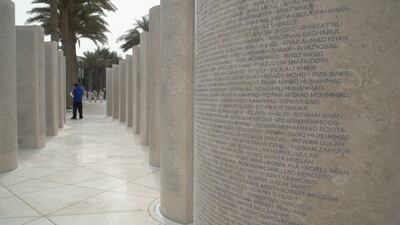
Khan's team also worked on the Expo 2020 Workers’ Monument, dedicated to the workforce who made everything possible. “Every name of every person who worked on the project, every construction worker, will be there. We were honoured to have the chance to work on this beautiful project.
“I don’t think anyone has ever done that globally before; it’s a world first and it’s what I really wanted to be involved with, a chance to thank those people. No one ever does.”
